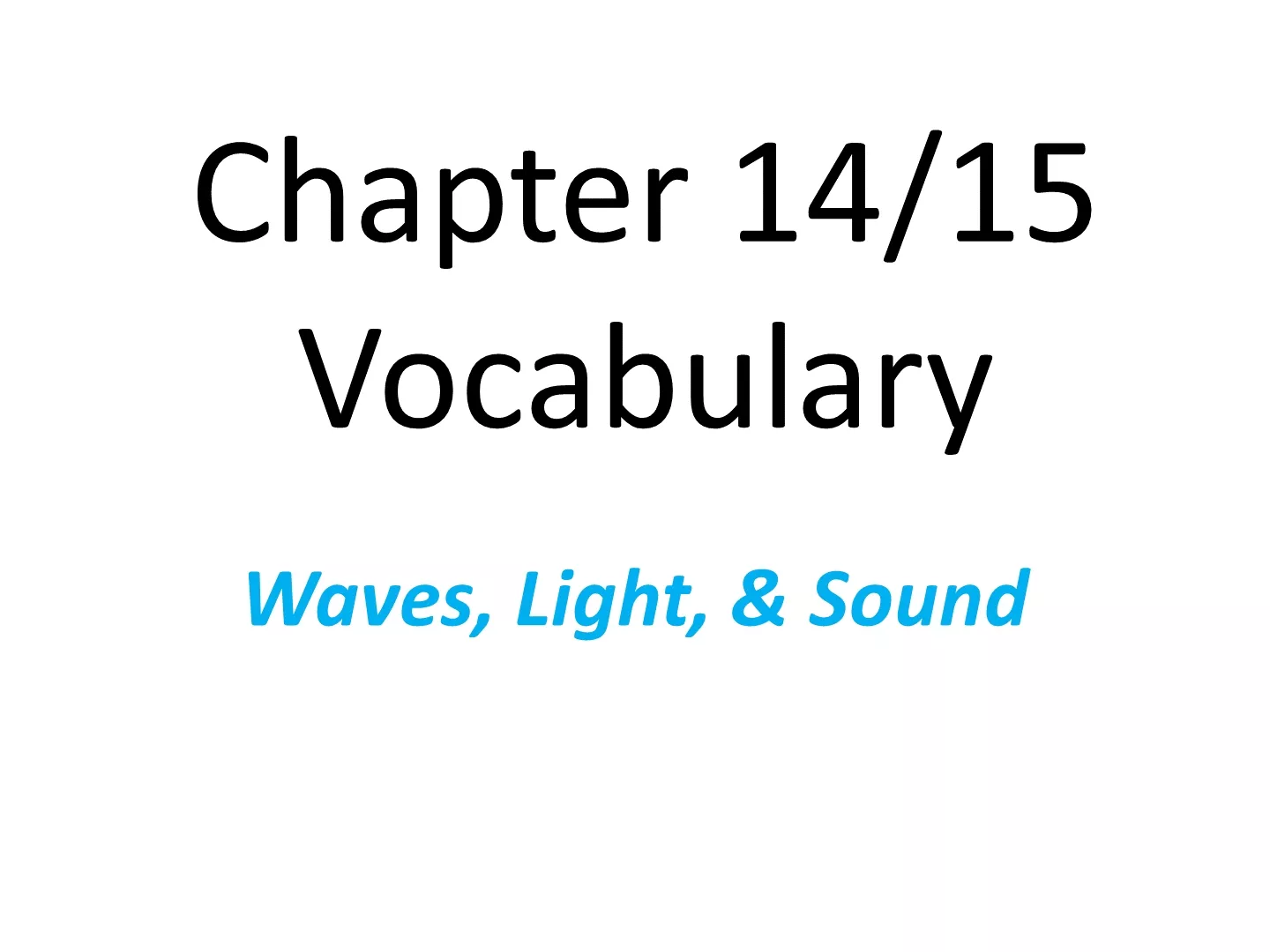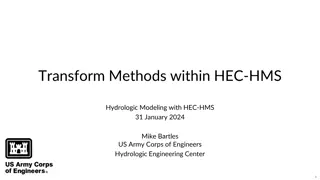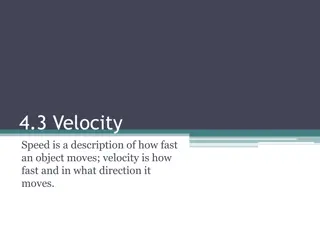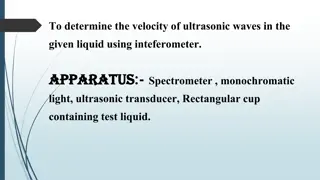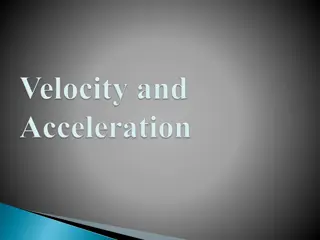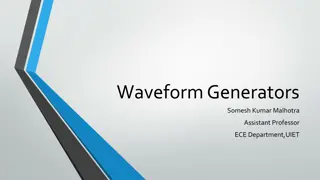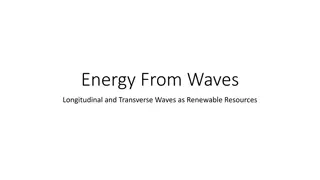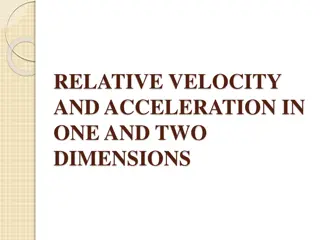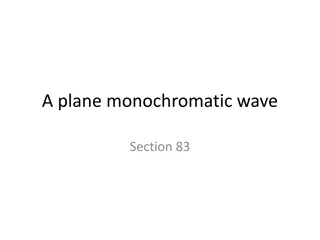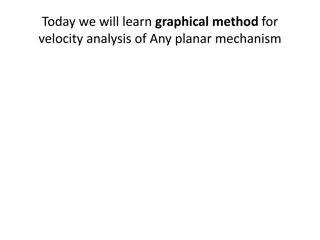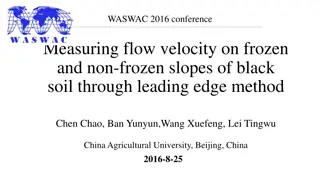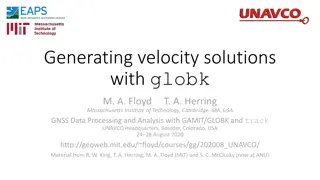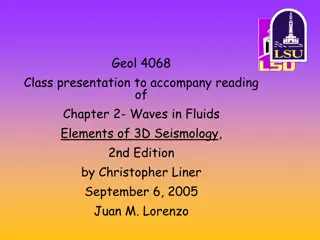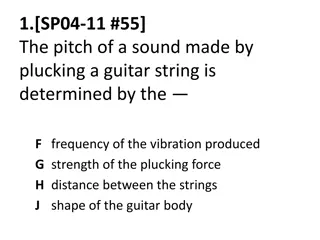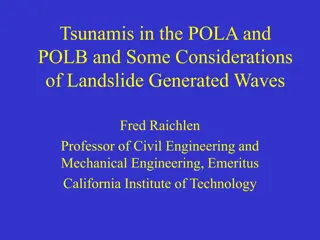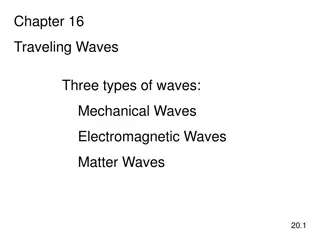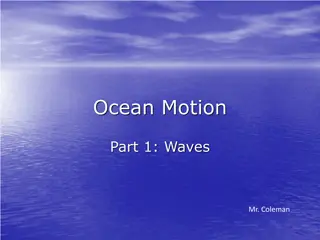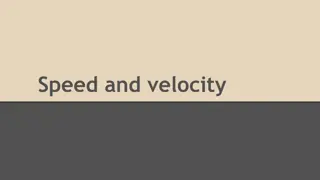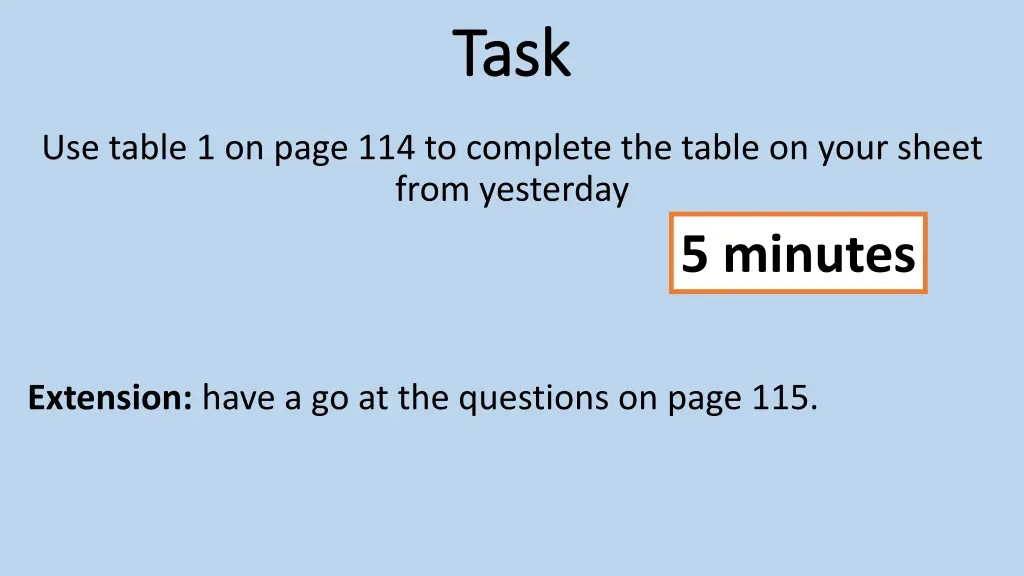
Understanding Waves: Properties, Formulas, and Applications
Explore the properties of waves, learn wave velocity equations, and discover how to calculate wave velocity using a ripple tank. Understand transverse and longitudinal waves, match wave terms to definitions, and identify wave amplitudes. Dive into the world of waves with interactive tasks and diagrams.
Download Presentation

Please find below an Image/Link to download the presentation.
The content on the website is provided AS IS for your information and personal use only. It may not be sold, licensed, or shared on other websites without obtaining consent from the author. If you encounter any issues during the download, it is possible that the publisher has removed the file from their server.
You are allowed to download the files provided on this website for personal or commercial use, subject to the condition that they are used lawfully. All files are the property of their respective owners.
The content on the website is provided AS IS for your information and personal use only. It may not be sold, licensed, or shared on other websites without obtaining consent from the author.
E N D
Presentation Transcript
Task Task Use table 1 on page 114 to complete the table on your sheet from yesterday 5 minutes Extension: have a go at the questions on page 115.
What is wrong with this diagram? There are 4 things write down what they are. Starter Crest Amplitude Wavelength Trough Extension: draw out the wave diagram above and label it correctly. Then describe what a transverse wave and a longitudinal wave is.
Objectives Objectives Recall the different properties of waves Be able to recall and apply the wave velocity equation Explain how a ripple tank can be used to calculate the wave velocity
Task Task Match the word (letter) to it s definition (number): A - wavelength 1 how many wave pass through a point in 1 second (Hz) B transverse wave 2 the wave travels parallel to the particles C - amplitude 3 the top point of a wave D time period 4 the distance from one point on the wave to the same point on the next wave E longitudinal wave 5 the distance from the middle to either the bottom or top of the wave F - frequency 6 the wave travels at right angles to the particles G peak/crest 7 the time for one wave to pass a given point Extension: draw a wave and label the amplitude, wavelength, peak and trough
A B Which wave has the biggest amplitude?
Earthquakes below the ocean produce tidal waves. We can work out how fast the wave is travelling, and therefore when the wave will reach the shore.
What is the formula for wave What is the formula for wave velocity? For any set of waves, the wave velocity can be calculated from the frequency (f) and wavelength ( ) using this formula: velocity? wave velocity = frequency x wavelength What are the units of velocity, frequency and wavelength? Wave velocity is measured in metres per second (m/s). Frequency is measured in hertz (Hz). Wavelength is measured in metres (m). What will the triangle look like?
Example Question Example Question A water wave has a frequency of 120 Hz. If the wavelength is 0.1 m, what is the velocity of the wave? Extension: calculate the wave velocity of a wave with wavelength 20cm (turn it into m!) and frequency 150 Hz.
Task Task Have a go at the questions on the sheet Extension: make up some of your own questions and get somebody else to have a go at them
Plenary Plenary Crest Amplitude Transverse Trough Frequency Wavelength Longitudinal Time period

